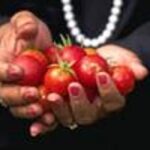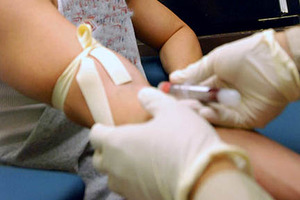This is a great list for the beginner herb garden planter. If you ever wanted to have your own fresh herb garden here is a great start. As you learn to grow herbs and harvest them for winter add more to your garden yearly and watch them grow into a very nice productive garden for all your culinary delights.
The Herbs:
Please note when buying herbs there are many different types of the same herb. When deciding on what type of say Oregano you want to plant. Read the descriptions on the packets and pick what you and your family will like.
Chives are a must you can use chives to garnish and as a flavor. Giving off a slightly onion or garlic taste depending on the variety planted, I suggest planting both. As the garlic will come in handy when flavoring meats, they will not replace actual garlic as the garlic taste is slight and not as heavy as actual garlic. Chives do not get grow very big though and some of the plants may end up being pretty thin, so you will want to play 4 to 5 plants. Harvest chives often to encourage new growth with in each plant.
Oregano, There are many types of oregano you will have to decide what is best for your taste I suggest Italian Oregano it is the most popular of the types and will work for any recipe calling for oregano. Oregano grows pretty strong and plants tend to give you enough for all year use 2 to 3 plants is what you will need because oregano can go into everything and you will find you use it the most out of all herbs. Oregano can be invasive so its best to plant this towards the back of your herb garden so that it will not take over other herbs.
Parsley, Is used for garnish and in recipes. You will want to plant 2 to 4 plants of Parsley. Parsley grows pretty thickly depending on type of parsley you choose. You can choose types that grow high on stalks or closer to the ground. Either choice the flavor will be good, but slightly stronger in some plants or slightly less in others. Choose your parsley seeds to your liking.
Rosemary, If you live where rosemary is hardy you will only need to plant 1 plant. If you live were it isn’t you will need to plant at least two plants. Rosemary can be a very strong herb, if this is an herb you do not care for you can omit it from your garden or you can leave it in as it does give off a pretty flower when it is allowed to go to flower.
Sage, I prefer the flavor of the silver colored sages. I think it has a slightly milder taste. There is nothing like a sage leave rubbed over a lamb chop cooked in a garlic and oil base. Out of all the herbs Sage is one of the hardest to grow and you may want to plant more then two plants so this will ensure that you get enough Sage.
Basil, A must have for anyone who cooks a lot of meats. Basil is an excellent herb for chicken. To ensure your basil lasts through the growing season, you will need to pinch back the flowers. Basil should not be allowed to seed and removing the flowers will help prevent this. 3 plants. Make sure you pinch the flowers back on your Basil or it will not seed and it will die before the growing season is over.
Bay, Bay is a harder plant to grow from seed and if you can obtain starter plants this is the route you may want to go if you are a beginning gardener. If you truly want to try your hand at seeds then I do suggest you buy a starter plant in case your seeds do not grow so that your herb garden will not be with out Bay. 3 plants are usually a good starter and depending on your use.
Coriander/Cilantro, The leaf part of the herb is called Cilantro as the plant part of the herb is called Coriander so you basically have two herbs in one plant. You will want to plant 2 or 3 plants to ensure you have enough of both. If you would like your plants to seed into next year cut back the plants before they seed.
Thyme, This is very easy hardy plant to grow that you should not have any problems with growing. It is suggest that you plant 2 to three plants.
The herb garden planter:
I plant my herbs in the ground, but in a specially designed area. I took 2×4’s and built the basic rectangular box like structure. Then I used wood to split up the inside. Into sections to keep the herbs separate. Each section should be made in sizes to accommodate the herb your going to plant.
Harvesting:
At the end of the growing season take all the clipping you can from your herbs. Bind them at the bottom with a twist tie, or rubber band. I prefer those soft little girl pony tail holders you buy at the dollar store (250 of them for 1.00) hand them upside down to fully dry. Make sure they do not get wet or that will mold. Once fully dried you can then crush up your herbs and place into bottle, baggies or whatever you wish to put them.
Keep in mind the amount of plants I say to grow are very basic and you will need to tailor them to fit your cooking needs as the years go on. I have learned through the years that I need to plant around 10 to 15 chive plants because of my constant us of them and only one plant of Thyme.




